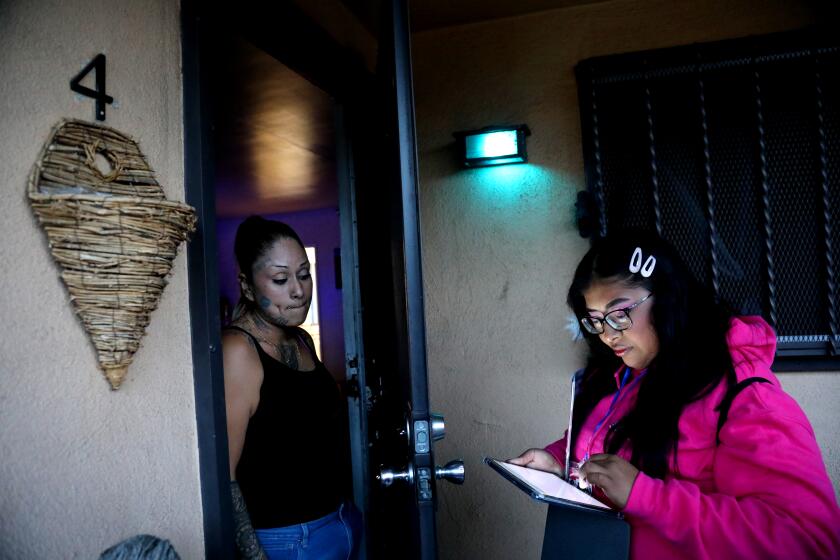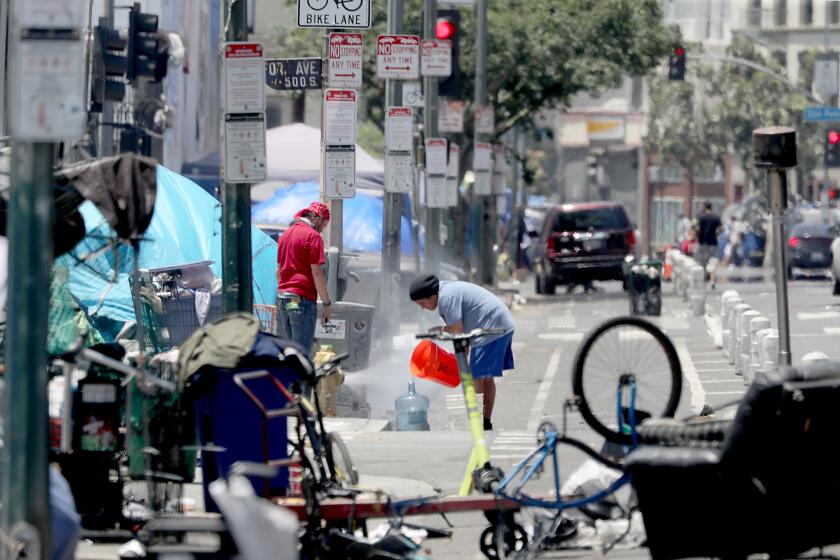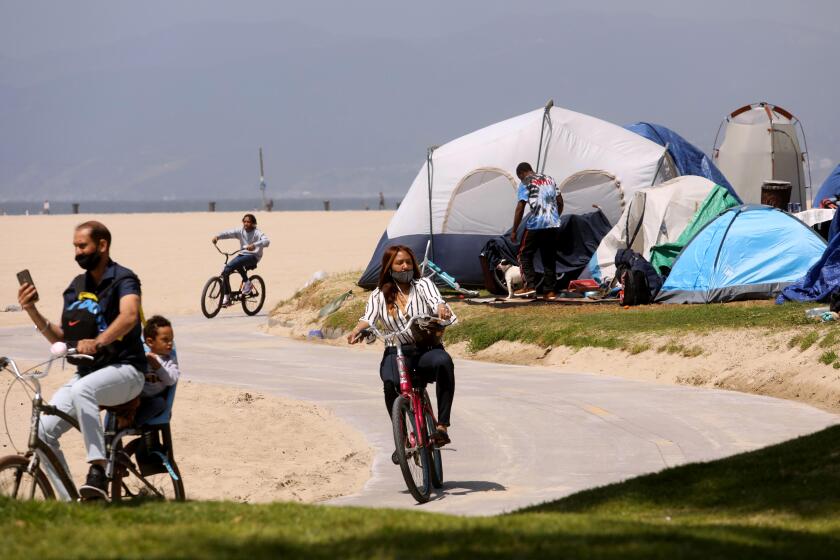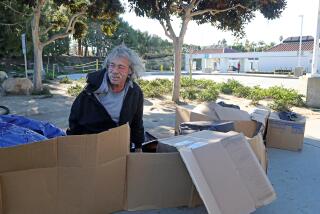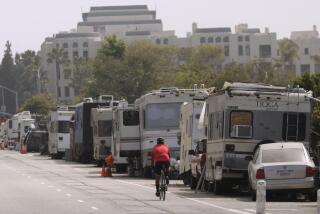Editorial: Release the anti-camping law report now. L.A. needs to see the data
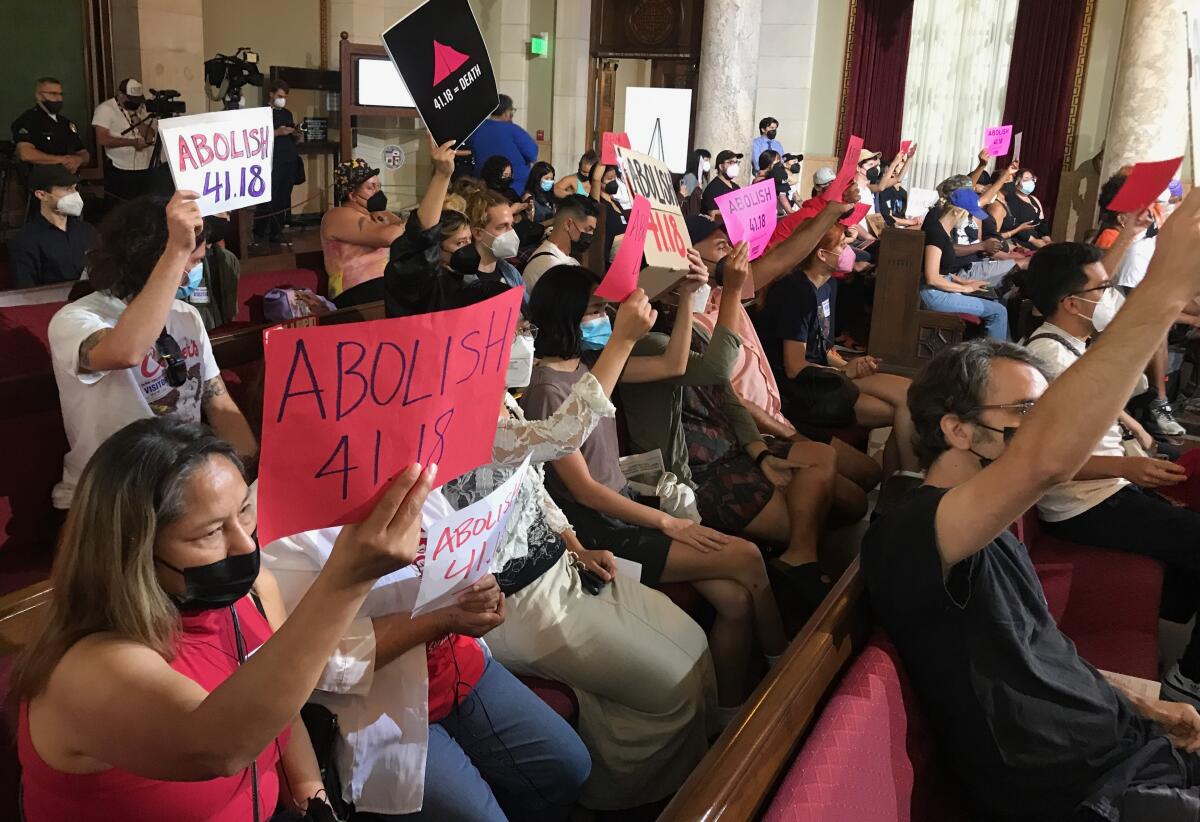
- Share via
There is no bigger political lightning rod right now in the city of Los Angeles than the anti-camping ordinance, which makes certain streets and sidewalks off-limits to homeless encampments in an effort to preserve public right-of-way.
Under the 2021 law, known as 41.18 for its municipal code number, camping in front of all schools and day-care centers and in parks is banned. Also, the City Council can prohibit camping in other specific areas at the request of the representative of that district.
Some council members have designated dozens of 41.18 sites in their districts. Others have never used the ordinance. Advocates for homeless individuals find the law cruel, pushing homeless people off one sidewalk and onto another. Worse, when homeless people are cited for breaking the ordinance they are left with a ticket they can’t pay. But some residents complain when council members don’t use it, believing the ordinance will somehow solve homelessness.
Rental subsidies, eviction defense and help finding new housing are prevention efforts that could help vulnerable people from falling into homelessness.
Is it working? We have been waiting nearly a year for data about how this controversial ordinance is performing. Are homeless people no longer camping in those areas? Did they get offered some kind of temporary housing on their way out? They should have at least had offers of shelter, according to the city’s street engagement strategy. How many sites are now under a camping ban? And how many citations have been issued by the Los Angeles Police Department when people refuse to leave a designated area?
Councilmember Katy Yaroslavsky, who represents Council District 5, proposed a motion early last year asking for the council’s chief legislative analyst, Sharon Tso, with the input of city departments, to examine these questions and return with answers. In April, the council passed the motion, which ordered Tso to report back within 60 days.
Nine months past that deadline, the council has yet to get those answers. If ever there were a report that should be fast-tracked, it’s this one. Homelessness is the most pressing issue in Los Angeles, and in this election year Angelenos need to know if the anti-camping law is accomplishing anything.
Solving the homelessness crisis includes ensuring that the people working to help our unhoused population have the means to stay here.
Tso says the holdup is due to the amount of time it takes to get and vet data from half a dozen departments on numerous anti-camping sites, 300 of which have been designated by council members. She had questions — including for Los Angeles Homeless Services Authority officials — that needed to be answered. She has much of what she needs but won’t predict a completion date. That’s disappointing.
LAHSA submitted its analysis of 41.18 to Tso months ago, and it offers some insights that suggest the ordinance is not working as planned. For example, LAHSA officials found that 81% of encampments repopulated with at least one previous camper.
That could be because only 17% of people went into interim housing — even when people had already been working with outreach workers — and slightly more than half of those left the housing, returning to the streets or to unknown whereabouts. The hurried clearings may have been disruptive to relationships between outreach workers and homeless individuals. LAHSA says it has no dedicated housing resources for 41.18 clearings. (It’s not like the city’s Inside Safe housing program, in which encampments are cleared after people are offered a hotel room or other temporary housing.)
I often hear from my unhoused neighbors that their needs are not complex. Even a modest monthly check would be transformative for many.
County Supervisor Lindsey Horvath, the chair of the L.A. County Board of Supervisors and the chair of the commission that oversees LAHSA, declared 41.18 “a failed policy that has only made the homelessness crisis worse” and has put the LAHSA analysis — which only became public in the last few days — on the commission’s agenda for its March 22 meeting. Meanwhile, L.A. City Council President Paul Krekorian, who co-authored the motion establishing the 41.18 law, seems skeptical of LAHSA’s analysis, saying he has some questions.
Questions are fine. But city officials need to show their own data on the anti-camping ordinance before they cast doubt on LAHSA’s — and certainly before another nine months have passed.
More to Read
A cure for the common opinion
Get thought-provoking perspectives with our weekly newsletter.
You may occasionally receive promotional content from the Los Angeles Times.
